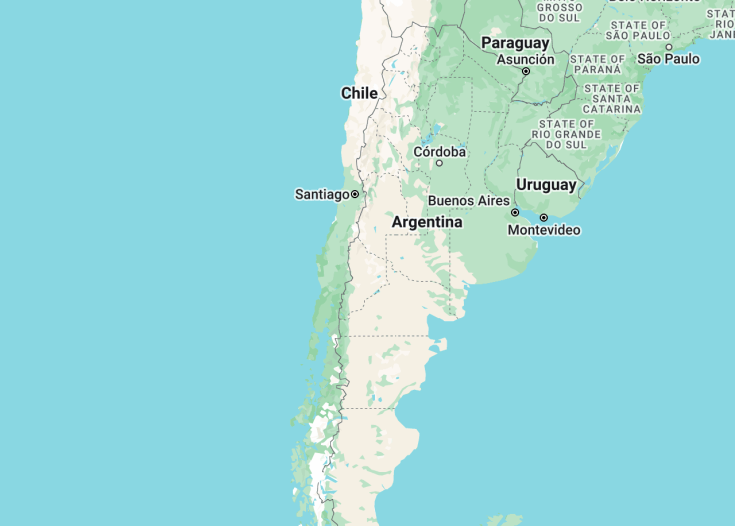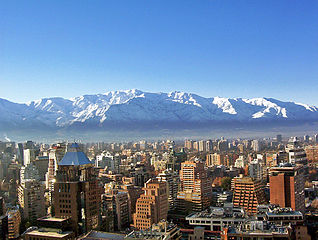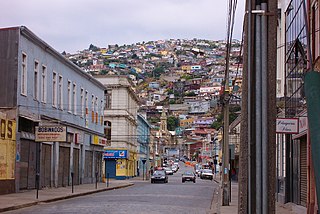Chile, a nation defined by its unique geographical span, encapsulates the vast Atacama Desert to the north, the sprawling vineyards in its heartland, bustling urban life in Santiago, the ethereal landscapes of Patagonia to the south, and the mysterious allure of Easter Island. A journey here promises diverse adventures, rich histories, and a confluence of cultures.
While in the Atacama, always carry water. The high altitude combined with the desert’s dryness can be deceiving and may affect travelers more than expected.
Traveling to Patagonia? Remember to pack versatile layers. Weather conditions can shift rapidly, ranging from sunny spells to unexpected flurries.
Chile: Where Adventure Meets Natural Beauty.
| Capital | Santiago |
| Time in Chile | GMT-4 |
| Language spoken | Spanish |
| Population | 19,458,310 (World Bank, 2021) |
| Religion | Christianity (88.9%) Unaffiliated (7.2%) Other (3.9%) |
| Currency | Chilean Peso (CLP) |
| Airports | Santiago International Airport Arturo Merino Benitez International Airport La Araucanía International Airport |
Chile: the land of contrasting landscapes and boundless adventure. Located in South America, this breathtaking country is home to stunning scenery, from the arid Atacama Desert in the north to the snow-capped peaks of the Andes in the east and the pristine fjords and glaciers of Patagonia in the south.
With a population of over 19 million, Chile boasts a rich history and vibrant culture. The capital city, Santiago, is a bustling metropolis known for its thriving art scene, lively markets, and delicious cuisine.
The official language spoken in Chile is Spanish, and the country’s diverse cultural heritage is reflected in its traditions, music, and vibrant festivals.
Chile is famous for its incredible natural beauty and diverse ecosystems. The Atacama Desert is one of the driest places on Earth and offers unparalleled stargazing opportunities. The Torres del Paine National Park in Patagonia is a hiker’s paradise, with its rugged mountains, glaciers, and crystal-clear lakes.
For adventure seekers, Chile offers a wide range of activities, including hiking, skiing, surfing, and rock climbing. The country’s unique geography provides the perfect setting for adrenaline-pumping experiences.
Where is Chile located?
Chile is located in South America, bordered by Peru to the north, Bolivia and Argentina to the east, and the Pacific Ocean to the west. It stretches over 4,300 kilometers (2,670 miles) from north to south, making it one of the longest countries in the world.
What is Chile famous for?
Chile is famous for its stunning natural landscapes, including the Atacama Desert, Patagonia, and the Easter Island. It is also renowned for its wine production, with the Central Valley region being one of the most important wine-growing areas in the world. Additionally, Chile is known for its literary tradition and has produced several Nobel Prize-winning authors.
History
10,000 BC – 16th century
Chile was inhabited by indigenous peoples for thousands of years before the arrival of the Spanish conquistadors in the 16th century. The indigenous Mapuche and Incas were the dominant cultures in the region, with the Mapuche fiercely resisting the Incan expansion.
16th century – 1810
In 1541, the Spanish conquistador Pedro de Valdivia founded Santiago, the capital city of Chile. Chile became part of the Spanish Empire and was ruled as a colony. The Spanish influence and colonization changed the socio-economic and cultural landscape of the region.
Chile’s struggle for independence began in the early 19th century. Inspired by the independence movements in other Latin American countries, Chileans fought for their freedom from Spanish rule. On September 18, 1810, Chile declared its first step towards independence, initiating a long and turbulent process.
1810 – 1879
Chile experienced various political and social transformations during the 19th century. The country went through periods of conservative and liberal governments, and faced internal conflicts such as the War of the Pacific (1879-1884) against Peru and Bolivia, which resulted in Chile gaining valuable territories.
20th century – present
The 20th century brought significant changes to Chile. In 1970, Salvador Allende became the first democratically-elected Marxist president in Latin America. However, his government was cut short by a military coup led by General Augusto Pinochet in 1973. Pinochet’s dictatorship lasted until 1990, characterized by human rights violations and economic reforms.
Since the return of democracy, Chile has experienced steady economic growth and political stability. It has become one of the most prosperous countries in South America, attracting tourists with its diverse landscapes, rich culture, and historical sites.
Visit Chile
What to see and do in Chile
Chile offers a multitude of attractions for visitors to explore. Here are some of the must-see and must-do experiences in Chile:
- Explore the stunning landscapes of Patagonia, including Torres del Paine National Park and the awe-inspiring Perito Moreno Glacier.
- Visit the vibrant capital city of Santiago, with its bustling markets, historic buildings, and lively atmosphere.
- Discover the beautiful coastal cities of Valparaíso and Viña del Mar, known for their colorful houses, vibrant street art, and scenic beaches.
- Experience the otherworldly landscapes of the Atacama Desert, with its geysers, salt flats, and star-filled night skies.
- Taste Chile’s world-renowned wines in the vineyards of the Casablanca and Maipo Valleys.
- Hike in the rugged beauty of the Lake District, with its stunning volcanoes, lakes, and hot springs.
- Immerse yourself in the indigenous culture and history of the island of Chiloé, famous for its UNESCO World Heritage wooden churches.
Events in Chile
Chile hosts a variety of cultural and sporting events throughout the year.
One of the most important events in Chile is the Independence Day celebrations, which take place on September 18th and 19th. During this time, the country comes alive with parades, traditional dances, fireworks, and street parties.
The Viña del Mar International Song Festival, held in February, is one of the largest music festivals in Latin America. It attracts international artists and showcases a wide range of musical genres.
In January, the streets of Valparaíso come alive with the vibrant and colorful Valparaíso New Year’s Eve fireworks display. The fireworks illuminate the sky and are reflected in the Pacific Ocean, creating a mesmerizing spectacle.
The Santiago International Film Festival, held annually in August, showcases a diverse selection of international and national films, attracting movie enthusiasts from around the world.
Best time to visit Chile
The best time to visit Chile depends on the region and activities you have planned. Generally, the best time to visit Chile is during the spring (September to November) and autumn (March to May) seasons when the weather is mild and there are fewer crowds.
If you’re planning to visit Patagonia and Torres del Paine National Park, the best time to go is from November to February when the weather is relatively warmer and the days are longer.
For stargazing enthusiasts, the Atacama Desert offers some of the clearest skies in the world. The best time to visit for stargazing is during the dry season from November to March.
It’s important to note that Chile’s diverse geography and climate offer something for every season, so there’s always an ideal time to visit depending on your interests and preferences.
Is Chile worth visiting?
Chile is definitely worth visiting for its breathtaking natural landscapes, rich cultural heritage, and friendly people. From the stunning peaks of the Andes mountains to the vast expanses of the Atacama Desert and the picturesque coastline, Chile offers a diverse range of attractions for every traveler.
Additionally, Chile’s vibrant cities, such as Santiago and Valparaíso, are filled with art, history, and culinary delights. The country’s wine regions also attract wine enthusiasts from around the world.
However, it’s important to be aware of the long distances between destinations in Chile, as travel times can be significant. Additionally, accommodation and travel expenses in certain areas, such as Patagonia, can be relatively high.
Overall, Chile is a unique and captivating destination that offers a wealth of experiences for those willing to venture off the beaten path and explore its natural and cultural wonders.
Common questions
What are the must-visit places in Chile?
- The Atacama Desert: Known as the driest desert in the world, the Atacama Desert offers breathtaking landscapes, including salt flats, geysers, and colorful lagoons.
- Easter Island: Famous for its mysterious Moai statues, Easter Island is a remote island filled with ancient archaeological sites and stunning natural beauty.
- Torres del Paine National Park: Located in Patagonia, this national park is home to towering granite peaks, glaciers, and pristine lakes, making it a paradise for hikers and nature enthusiasts.
- Valparaiso: This vibrant coastal city is known for its colorful hillside houses, impressive street art, and bohemian atmosphere. Wander through its steep streets and ride its iconic funiculars to discover its charm.
- Chiloé Island: Experience the unique culture and architecture of Chiloé Island, known for its distinctive wooden churches, palafitos (houses on stilts), and delicious seafood.
- San Pedro de Atacama: This small town serves as a gateway to the Atacama Desert and offers a laid-back atmosphere, charming adobe architecture, and access to nearby geothermal hot springs.
- Santiago: Chile’s capital is a bustling metropolis surrounded by the Andes mountains. Explore its vibrant neighborhoods, visit its museums and markets, and enjoy its lively nightlife.
- Chiloe National Park: Located on Chiloé Island, this national park is a haven for nature lovers, with its lush forests, fjords, lakes, and diverse wildlife.
- Pucon: Nestled in the Lake District, Pucon is a popular destination for outdoor activities such as hiking, skiing, and rafting. Don’t miss a visit to the nearby Villarrica Volcano.
- La Serena: This coastal city is known for its beautiful beaches, historic architecture, and clear skies, making it an ideal spot for stargazing.
- Antofagasta: Located in the northern part of Chile, Antofagasta offers stunning coastal scenery, archaeological sites, and a vibrant mining history.
- Puerto Varas: Situated on the shores of Lake Llanquihue, Puerto Varas is a charming town known for its German influence, scenic views of volcanoes, and outdoor activities.


















